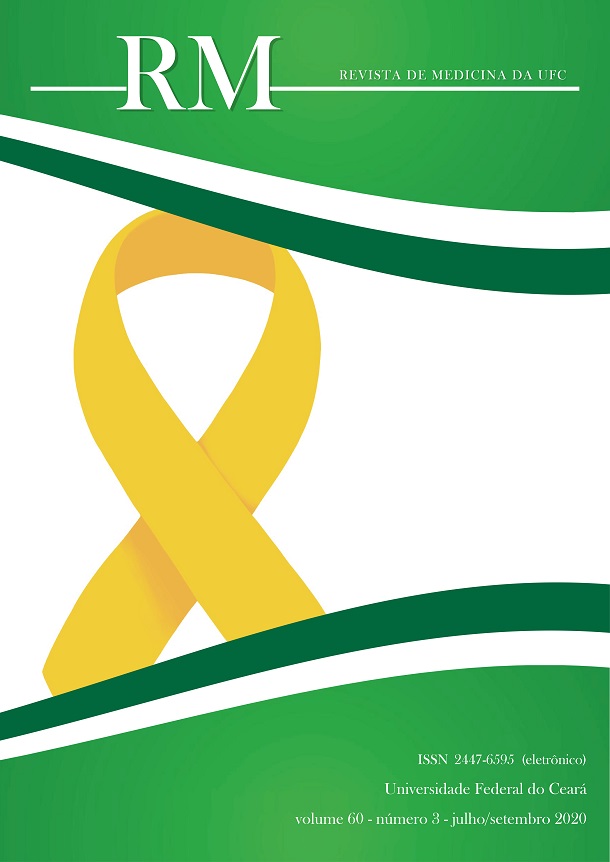Tay-Sachs disease: case report
DOI:
https://doi.org/10.20513/2447-6595.2020v60n3p48-50Palavras-chave:
Tay-Sachs disease, Hexosaminidase A, SphingolipidsResumo
Objectives: Report a case of Tay-Sachs disease. Methods: A complete ophthalmologic examination, retinography and blood dosage of hexosaminidase A (EHA) activity were performed. Results: A one year and seven months old male with a history of generalized tonic-clonic seizures, with delayed neuropsychomotor development from the eighth month of life. At the ophthalmologic examination the patient did not fix or follow objects, with bilateral horizontal nystagmus. The fundoscopy revealed an image of “cherry-red spot” in the macula in both eyes. Dosage of EHA activity confirmed diagnosis of Tay-Sachs disease. Conclusion: Tay-Sachs Disease is a genetic disease with an autosomal recessive inheritance pattern characterized by deficiency of EHA activity, leading to the accumulation of sphingolipids in neuronal cells that results in progressive neurological dysfunction. In the retina, there is deposition in the ganglion cells, resulting in the appearance of cherry-red spot macula. There is no curative treatment, aiming at the therapy, only the clinical support in the patient.
Downloads
Publicado
Edição
Seção
Licença
Indicação de avaliadores (revisores): caso desejado, os autores podem sugerir de 1 a 3 especialistas para a revisão do manuscrito. O(s) revisor(es) deve(m) preencher os seguintes requisitos:
- ter nível de Especialização, Mestrado ou Doutorado no tema do manuscrito;
- não possuir conflito de interesses com os autores;
- não possuir vínculo com o trabalho submetido;
- o revisor sugerido pode ser um membro do corpo editorial ou não (revisor ad hoc);
Declaração
Transferência de Direitos Autorais
O(s) autor(es) vem por meio desta declarar que o artigo intitulado “TÍTULO DO ARTIGO” enviado para apreciação da comissão
editorial da Revista de Medicina da UFC é um trabalho original, que não foi publicado ou está sendo considerado para publicação em outra revista, que seja no formato impresso ou no eletrônico.
O(s) autor(es) do manuscrito, acima citado, também declaram que:
-
Participaram suficientemente do trabalho para tornar pública sua responsabilidade pelo conteúdo.
-
O uso de qualquer marca registrada ou direito autoral dentro do manuscrito foi creditado a seu proprietário ou a permissão para usar o nome foi concedida, caso seja necessário.
-
A submissão do original enviada para a Revista de Medicina da UFC implica na transferência dos direitos de publicação impressa e digital.
A declaração original deve ser assinada, datada e encaminhada por e-mail: (revistademedicina@ufc.br).
Nota: Todas as pessoas relacionadas como autores devem assinar esta declaração. Não serão aceitas declarações assinadas por terceiros.


